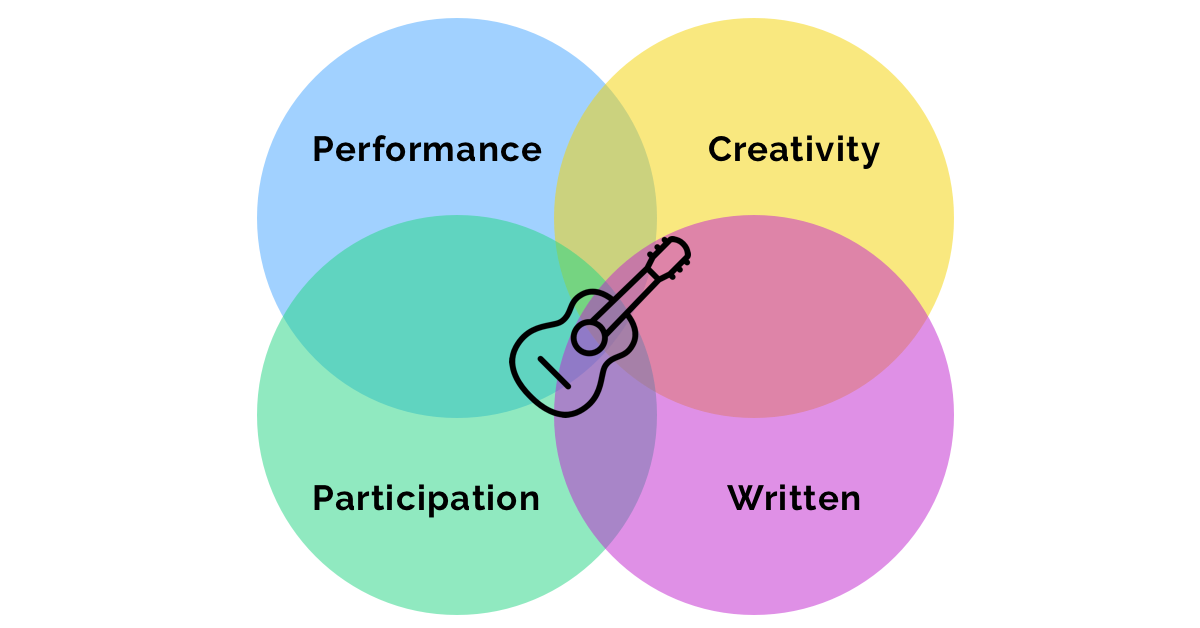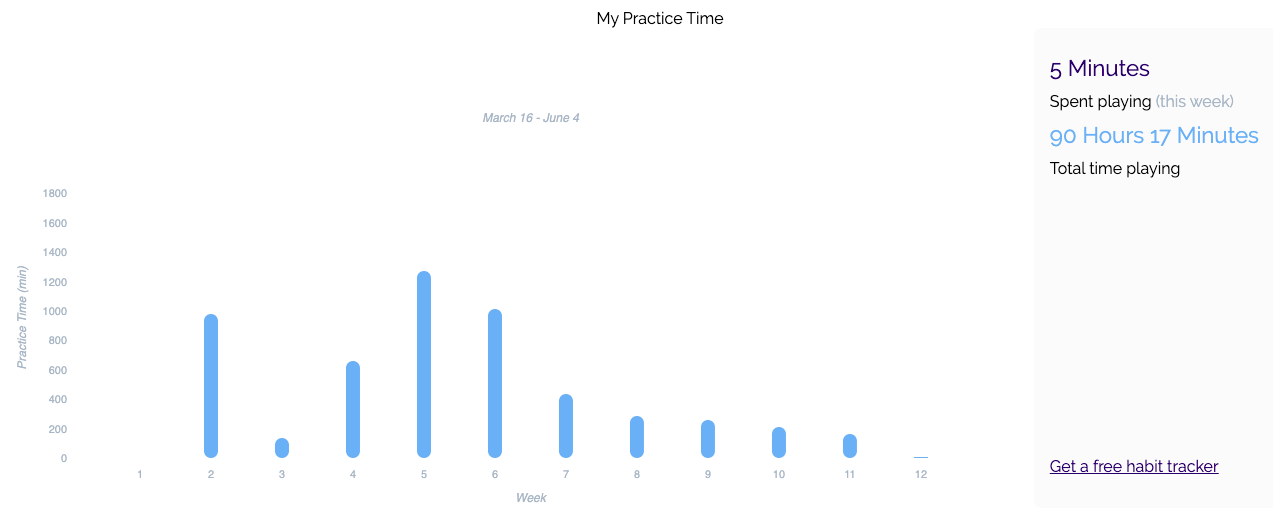One of the best things about working for Moosiko is that I get to talk with a lot of school guitar teachers. Since many guitar teachers are either new to guitar or new to the K12 education environment, the most common question they ask me is, “What kind of rubric should I use for grading my guitar class?”
I don’t believe there is a single perfect rubric for guitar classes because 1 – School assessment policy can vary and 2 – There are many types of guitar classes (general music, beginner guitar, classical, jazz, ensemble..etc.). General music may focus more on theory and standard notation where beginning guitar may focus on performance. Such is the nature of teaching in the arts.
I’ve pulled together a number of templates and examples I’ve gathered from existing guitar teachers, education industry leaders, and personal experience to provide a framework you can pick and choose from.
Types of Assessment Criteria
- Performance – Evaluation is purely based on musical performance which combines aspects of physical technique, sound quality, rhythm/tempo, and musical accuracy. Since guitar is a performance based activity, some believe performance based assessment should be the only approach.
- Participation – Using some measure of student engagement (# of assignments completed, practice time, class hours), participation can be part of the rubric. This can be useful during distance learning or hybrid learning environments when students can’t be, for lack of a better term, “locked in a room.”
- Creativity & Expression – I believe the utmost success of music education is when students gain enough understanding of an instrument where they can use it as a form of personal and emotional expression throughout their entire lives. This includes things like creating new music, emotional storytelling, collaborating with others, or creating new ideas. Music is one of the few areas in the education system where creativity should run wild. Assessment is more difficult because it tends to be more subjective, but that doesn’t mean it’s less important.
- Written – If your curriculum involves lots of music theory and standard notation, written assessments can be used.
- Mix – You might find the best rubric as a mix of some of these criteria.
Performance Based Examples
A specific skill, song, or lick needs to be defined in order to evaluate performance. From easy to hard, examples include:
- Simple one-string melody
- Multi-string melody
- Basic chords
- Chord transition
- Chord progression
- Barre chords, transitions, progressions
- Song (partial or full)
- Rhythm / Strumming Patterns
The following rubric is an example of 3 skills (basic chords, transitions, and progressions) on a scale of 0 – 3 points for each skill. The student must demonstrate all three criteria to get a rockstar grade (3 points). This list can be as long or as short as you want for each section/lesson. A final grade can be quantified by counting up the total points and dividing by the total possible.
| Assessment Levels Played at X tempo | Rockstar (Master) 3 points | Opening Act (Proficient) 2 points | Backup (Still Learning) 1 point | Newbie (Just Starting) 0 points |
| Basic Chord: G, C, D, Em | 1. Correct fingering 2. Clean sound 3. On tempo | 2 of 3 correct | 1 of 3 correct | None correct |
| Chord Transition: G - C, D - Em, G - C | 1. Clean sound 2. Smooth, consistent transitions 3. On tempo | 2 of 3 correct | 1 of 3 correct | None correct |
| Chord Progression: G - D - Em - C | 1. Clean sound 2. Continuous play, no hesitation 3. On tempo | 2 of 3 correct | 1 of 3 correct | None correct |
Our Beginning Guitar Curriculum has some variations and more nuance on this approach which we like. A key point is that we recommend that students have the entire semester to redo any skill assessment. Since students learn at various speeds, this is an effective approach to providing fairness for all types of learning.
Participation
Participation evaluation is less black and white than performance. It can range from showing up (physically or virtually) to practice time to creative projects like song writing. While you might not want to grade participation for the core curriculum, it is valuable for creative projects. Collaborating in a band, attempting to write a new song, or helping a peer are valuable endeavors, whether they are performed effectively or not.
Even if participation is not apart of the rubric, it should be tracked to help diagnose performance problems. This is why we’ve added practice time tracking to Moosiko.
Creativity Assessment Examples
How the heck do you grade creativity? It isn’t as straightforward as grading a G chord at 60 bpm. Here is a good way to think about assessing creativity:
When students are playing a piece, are they making it theirs? Are they expressing themselves through the music or the activity? This can come in the form of body movement, a story about the piece they feel is important, self-evaluation, and of course expressiveness in the music. Creativity is not a robotic, perfectly executed piece. Good musicians learn all the rules, great musicians break them.
Creativity in the Classroom is an excellent short book by Sarah Gulish and Stefanie Elfstrom that provides tons of examples of creative classroom activities and how to manage/grade them. Here is one rubric example from that book.
| "A" Grade | "B" Grade | "C" Grade | "D" Grade |
| - Total group cooperation - Creative interpretation. Not the easiest or first thing that came to mind. - Time was made for planning an rehearsal - Group/Individual takes care to work out ideas, correct flaws, and shoot for the best. Did not take easy way out. - Went beyond minimum effort. Took pride in their results. | - Mostly cooperative group - Interprets in a creative way but may have been the first idea that came to mind - More rehearsal/planning could have been done. - Attempted to correct flaws and achieve the best but ended up taking the easy way out. Seems somewhat rushed. - Group/individual put forth good effort and showed some pride | - Some cooperation, some members were lacking participation - Not much creativity in the interpretation - Major lacking of rehearsal/planning. Not good use of time. - Group/individual tool the easy way out and was rushed. - Group/individual did not show much pride in their work | - Group did not cooperate - Little to no concern for creativity - Overall interpretation was lacking organization. Clearly not prepared. - Took the easy way out, careless, rushed. - No effort or pride was shown in work |
Mix
Here are just a few ideas on a mixed rubric to help get you started:
- Fully In-Person: 80% performance, 20% creative. The creative piece can incorporate a final project of some sort.
- Fully Online: 60% performance, 20% participation, 20% creative. Participation can be practice time + virtual attendance. Participation could also be peer-to-peer evaluation or even self evaluation. Creative can be a project students can do at home.
- General Music: 70% performance, 30% written. Written tests assess theory.
Your imagination is the limit on mixing some of these criteria for your rubric. Here is just one example that combines performance and creative criteria.
Master | 5 pointsThe performance demonstrates full mastery of all the skills learned and practiced in the song. The transitions between chords are clean and smooth. Each note in the chord can be heard clearly The performer shows full command by adding expression and dynamics to the performance.Excellent | 4 pointsThe performance demonstrates a majority of the skills learned and practiced in the song. There may be some small mistakes, however it does not disrupt the tempo and flow of the song. The transitions between chords are clean and smooth overall and the strumming rhythm is accurate.Good | 3 pointsThe performance demonstrates some tempo hindering mistakes that may disrupt the flow of the song. However the performer is able to make it through the song. The chords being played may not be clear and may have some muffled notes, the strumming rhythm may be incorrect in certain spots, but overall is accurate.Fair | 2 pointsThe performance demonstrates many tempo hindering mistakes that disrupt the flow of the song. The performer stops and starts in many areas more than once and the chords being played are not clear and have muffled notes. There are many flaws in the rhythmic strumming pattern.Poor | 1 pointThe performance lacks resemblance of the song and the performer cannot make it through the song without stopping or pausing many times. The chords are not clear and the rhythmic strumming pattern is not correct.
When / Where to Assess
Assessment for your guitar students can be time consuming. Do you take class time to assess each individual student? That could take a while. Do you do it in groups? Here are just a few ideas that some teachers do:
- In the Moment: In a recent TGW course, Dr. Rob Pethel mentioned he grades in the moment while students are doing exercises and practicing. As he walks around during class, he notes who is struggling and keeps a log of sub performance. This is probably the most time efficient way but requires some experience to quickly spot errors. It is also more difficult for online lessons.
- Student by Student: Taking 3 – 5 minutes per student to assess a skill or song is going to be the most effective and also the longest. A class of 30 students will take 150 minutes. How do you keep the rest of the students busy during that time?
- In Groups: A faster way than student by student is assessing in groups of ~3 – 7 students at once. This allows you to more easily spot performance issues while moving through your roster more quickly. This is more practical on video as well.
- Moosiko Student Recordings: Moosiko has a built-in video recording feature that makes capturing student videos super easy. You can have students capture video for each skill or for each song. Students have access to their recordings so they can build a portfolio over the course of the semester or year.
Tools
One of the primary reasons we built Moosiko was to help save time for teachers. Performance based assessment can be tedious and time consuming, which is why we have features to track skills, view practice time, and record students. We’ll be improving and adding to these features over time to continue to make assessment easier for you.



